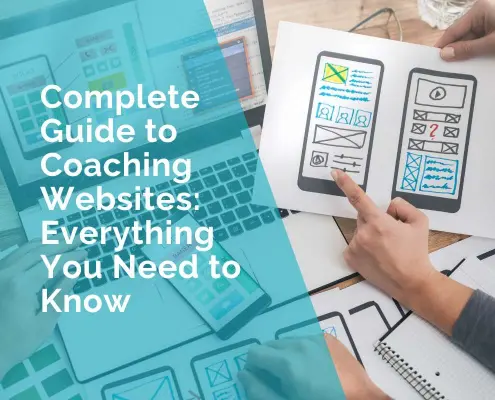How to Create an Effective Marketing Plan for Your Small Business
Simply explain, marketing is a set of all strategies and tactics aiming to attract and retain new customers. So, its importance to every business, big or small, is obvious. There are so many aspects of marketing out there we can use to boost our online visibility, so it’s sometimes challenging, and we don’t know where to begin. Because of that, it is good to have a marketing plan to achieve business success. Keep reading to learn more about creating an effective marketing plan for your small business.
We will define the marketing plan concept and explain why each business needs one. Next, we will explain the marketing funnel concept and move to different marketing plans (content, social media, email, public relations and SEO). Finally, when we understand the basics of marketing, we will showcase steps for creating an actionable marketing plan.
The steps include starting with an executive summary, defining the mission, vision and values, identifying the target audience, researching the competition and determining marketing goals. Moreover, we also need to identify the marketing channels to use, set the budget and track progress.
What is a marketing plan?
To be able to create an effective marketing plan, first, we need to understand the concept of it. It is defined as a strategy each business outlines to sell products or services. It contains basic elements such as the target audience, the best ways to reach it, prices, tactics, and measures for tracking progress and success. A marketing plan acts as a guideline towards your business goals; every business (small, medium, large) should have it – the next paragraph deal with why your business needs a marketing plan in more detail.
Why your business needs a marketing plan
Now that you know what a marketing plan is, we can move to explain why your business needs it and can only benefit from having and following it. The marketing plan links the business strategy and marketing execution. It has plenty of benefits. Firstly, it helps us better understand where our business stands and its strengths and weaknesses. Secondly, it helps us focus and keep things in alignment. It is easy to get lost without a plan in place. Thirdly, you can make more informed decisions when there is a plan to follow.
The marketing funnel
You are probably familiar with the concept of the marketing funnel. In case you need clarification on what it is, we will explain. Essentially, it is a path a person takes to become your customer. The marketing funnel is an illustration of this path. The AIDA model of the marketing funnel contains the following stages: awareness of the product, interest in evaluating its benefits, desire for the product and action of purchasing the product. There are certain variations and modifications to the funnel, but the primary goal remains the same: identifying the steps to how people become customers.
Types of marketing plans
When it comes to the marketing plan, there are various sub-types besides the overall marketing plan. They include content, social media, email marketing, public relations and SEO.
Content marketing
Content marketing is the deliberate marketing strategy that involves creating and disseminating valuable, pertinent, and consistent content. The goal is to provide customers with valuable information, expecting them to ultimately show their appreciation by supporting and remaining loyal to our business. This means you should have a blogging section on your website where you can post insightful, relevant and entertaining content to your customers and potential customers. It is an investment with the highest ROI.
Social media marketing
Besides content marketing, we also need a social media marketing plan. We can repurpose the content from our blog and post it on social media. Social media marketing utilises popular social networking platforms like Facebook, Twitter, Instagram, and LinkedIn to effectively connect with customers on a broad and personal level. It achieves widespread reach by facilitating quick and extensive sharing of posts. Moreover, it fosters deep engagement as individuals can directly interact with the brand and actively participate in discussions with fellow users associated with the brand. Remember to choose relevant social media channels for your business to reach your target audience. Not all social media channels are relevant for every type of business equally.
Email marketing
Email marketing involves the utilisation of emails and email newsletters as a means of communication with both prospective and existing customers. This marketing approach has been found to generate significant returns on investment, with an average return of $38 for every $1 spent. However, we need to be mindful not to be intrusive and spammy, as nobody likes that.
Public relations
Public Relations (PR) focuses on establishing and upholding a favourable image for your business by creating a compelling narrative and fostering meaningful connections with prominent journalists, influencers, and competitors. It also entails identifying brand ambassadors who will enthusiastically promote and advocate for your business, thereby spreading awareness about it.
SEO
Finally, there is SEO. SEO is a marketing field that enhances visibility in natural search engine results without using paid advertisements. It encompasses a blend of technical and creative strategies to improve search rankings, drive traffic, and raise overall awareness of a website or online presence in search engines. And as such, it is of vital importance for boosting your brand’s online visibility.
How to create an actionable marketing plan
Now that you have all the information, we can move to the article’s goal: sharing insights regarding steps for creating an actionable marketing plan.
Start with an executive summary
Drafting an executive summary is the first step in creating an actionable marketing plan. It usually appears at the beginning of your marketing plan. It is basically a summary of the whole business and highlights your marketing strategy’s key elements. Moreover, it should outline your marketing goals and explain how campaigns are linked. It is a quick overview of the company, and as such, it should showcase the company’s objectives, marketing successes, and plans for the future. They should be interesting enough to prompt people to continue reading it.
Define your mission, vision and values
When it comes to your mission, vision and values, you should already have set these when starting your business. Review them before creating your marketing plan. Your marketing plan becomes more valuable when you have these things. Your mission, vision and values explain why you do what you do, they give you a background story. By understanding your company’s main aims, you can get a clearer picture of the marketing goals, activities, and future objectives.
Identify your target audience
The next essential aspect is identifying your target audience. You need to know who your target audience is to be able to reach them with your marketing plan. That means knowing their approximate age, perhaps prevailing gender, location, interests, etc. You need to have a buyer persona, which is your ideal customer. Additionally, you need to use the right messaging for your demographics. What also helps is knowing the pain points and goals of your ideal customer. For example, if you run a daycare centre such as Insight Early Learning, your ideal customers are parents of young children. There can be two subcategories: young, first-time parents and middle-aged people with more than one kid.
Research your competition
Whatever business is in question, you must thoroughly research your competition. You can learn many useful things from this research, saving you time, effort and money. Small businesses often tend to skip this step – however, they shouldn’t, as they can learn much from it. By gaining insight into the competitive advantages of your rivals and anticipating their potential reactions to your products or services, you can develop effective strategies. When you identify your competitors, you can set your business apart by offering consumers what may be lacking.
As a component of your market research, conducting a SWOT analysis of your competitors allows you to understand their actions, determine their successful strategies, and discover ways to enhance your own approach.
Determine your marketing goals
Marketing goals drive your marketing plan, so it’s clear why we need to determine them. After you have identified your market problems and opportunities, you can move to determine your marketing goals. These goals often have a communication or a financial focus, including maximising sales revenue or volume, improving customer satisfaction and lead generation, increasing customer retention and raising brand awareness. All of your marketing objectives should align with SMART criteria, including specific, measurable, achievable, relevant and time-bound goals.
Identify the marketing channels to use
When you have your marketing goals set, you can move to identify the right marketing channels to use. There are various marketing channels, so choosing the best ones takes work. There are traditional and digital methods; you should pay attention to both. The more you know about them, the easier it will be to choose the best ones to build effective marketing funnels. Search engines, social media, email, and mobile are some of the most popular digital marketing channels.
Set your budget
Your budget plays a key role in creating your marketing plan, as it limits how much you can spend on your marketing campaign. When formulating your plan and assessing your intended actions, consider the projected expenses, resources, and time needed to attain your objectives. This will assist you in determining the actual budget when the time comes. Moreover, establishing a marketing budget will help you stay mindful of the financial considerations throughout the execution and implementation stages. Even if your marketing team relies heavily on cost-free channels and platforms, it is wise to anticipate potential “hidden” expenses and be prepared for them.
Track your progress
And lastly, to get a sense of what you are doing right and what you need to change, you should find a suitable way to track progress and measure success.
As you can see, having a proper marketing plan is crucial for the success and expansion of your small business into a potentially larger one.











